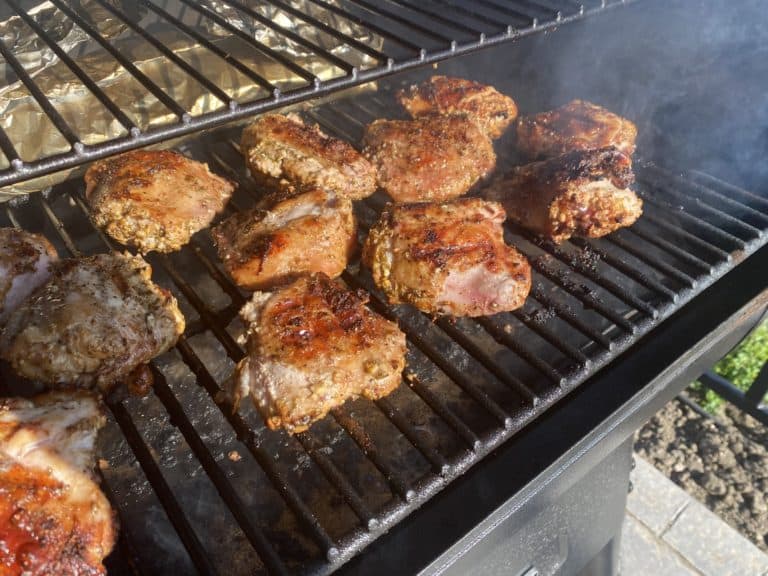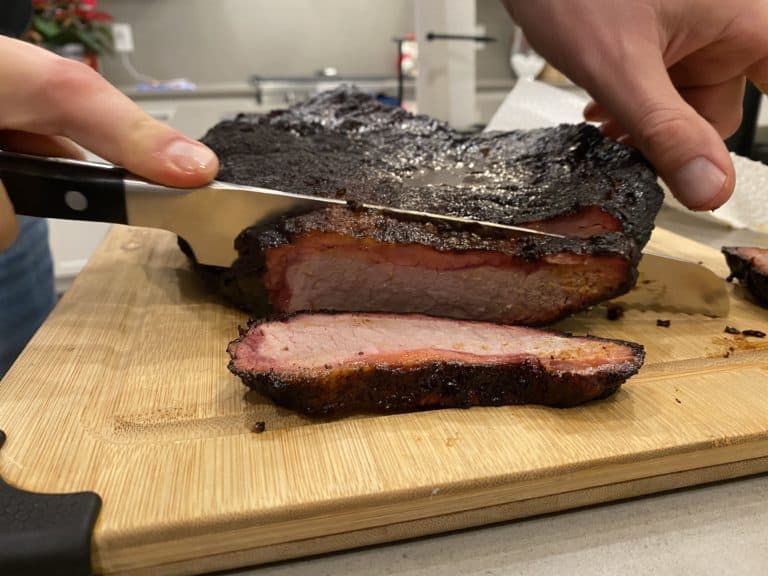What You Should Know About Smoked Foods|Risks and Tips

Health Impacts of Consuming Smoked Foods
Last Updated: June 8, 2022
Is smoked food bad for you? The short answer is, yes, but there is a lot to consider and we explain it in detail. There are many factors that play a role here such as how often you consume smoked foods, portion sizes, and the types of smoked foods. Do the transformational effects also cause adverse health effects? Should you give up smoked foods in the name of health? Simply put, is smoked food bad for you? Let us explain.
What types of food are you smoking?
One factor for the health risks of smoked foods is the type of food you’re smoking. Some popular meats (e.g. pork butt or beef brisket) used for smoking are higher in fat, calories, and salt and processed meats, such as hot dogs and sausage, are high in salt, nitrates, and other food chemicals associated with health problems.
How much smoked food can you consume?
A review from over 800 studies found that consuming 50 grams of processed meat a day increases your risk of colorectal cancer by 18%. This doesn’t mean you have to stop smoking meat. It’s more about creating balance between the food you’re smoking and how often you’re consuming them.
Health effects of wood smoke
Wood smoke contains over 300 compounds. The levels of each compound depend on the type of wood used, wood moisture, the size of the wood, and the smoking process.

Smoked Chicken
Polycyclic aromatic hydrocarbons found in smoked wood
There are two main types of chemicals associated with grilling and smoked foods, called aromatic hydrocarbons. Polycyclic aromatic hydrocarbons (PAHs) form when juices and fat from meat drip into the fire, causing flames and smoke, which contain PAHs that attach to the meat.
The second type of chemical is heterocyclic amines (HCAs) but these are only found in meat that is cooked at high temperatures.
Cooking methods for smoking foods include longer cooking times with lower temperatures. So smoked foods don’t have significant amounts of HCAs.
Phenols and flavor
The phenols found in wood smoke handle most of the flavor and preservation properties. Currently, there is little evidence that the phenols found in smoke have the same reactions that PAHs have on DNA and cells.
Ideally, a food would have the desirable smoke flavor from the phenolic compounds and a low PAH content.
What evidence is there that PAHs in smoked foods increases cancer risk?
When specific enzymes metabolize PAHs, they become capable of damaging DNA and other cells. Studies have shown that exposure to PAHs may increase cancer in animal subjects.
Most current literature has fed rodents a diet high in PAHs and HCAs. The rodents developed tumors, leukemia, breast cancer, colon cancer and prostate cancer. Keep in mind, they fed rodents very high amounts, much more than a person would eat on a regular diet.
Human-based studies have yet to establish a direct link between PAHs and cancer in humans. One challenge is to determine the exact level of PAHs in smoked foods. We can estimate but they need detail about exact cooking techniques to determine exposure levels.
Each person also metabolizes PAHs slightly differently. So even people who have eaten these same compounds may not have the same cancer risk. Plus, you can be exposed to PAHs from other environmental sources, like cigarette smoke.
Currently, there are no guidelines for foods containing PAHs. Guidelines focus on limiting the amount of red and processed meats but not focused on cooking methods.
Sodium Content in Smoked Foods
Adding salt brines, salt-curing, rubs, and spices increases the sodium content of foods. Sodium is a mineral and an electrolyte and is an essential nutrient for survival. However, research associates a higher risk of high blood pressure, cardiovascular disease, and kidney diseases with high levels of sodium consumption.
Most people consume more than enough sodium in our daily diets since salt is added to many foods. In comparison, smoked salmon has 600-1,200 mg per 3.5-ounce serving and fresh salmon has 75 mg of sodium.
If you’re managing a chronic disease, like high blood pressure, limit smoked foods. Balance high sodium foods, like smoked meat, with low sodium foods, like vegetables or fruit, in the same meal.
What about liquid smoke flavoring?
Liquid smoke is a byproduct of burning wood. Popular wood chips are hickory, applewood, pecan, and mesquite, which influence the flavor. Liquid smoke gets added to commercial products, like barbecue sauces, marinades, hot dogs, some cheeses, and bacon. It’s also added to foods that aren’t traditionally smoked for added flavor.
Liquid smoke adds the flavor of smoked wood without the use of a grill or smoker. It’s filtered smoke mixed with water.
Adding liquid smoke doesn’t add any calories or fat. Liquid smoke itself doesn’t have a lot of sodium per serving. Yet, some brands add other ingredients that add extra sodium, so read labels carefully.
Since they produce smoke flavoring products and liquid smoke from smoke byproducts, they might be a source of PAHs. However, the levels are lower and vary based on the amount used.
Wood smoked turkey breast was found to have 5.9 ug/kg of PAH, while liquid smoked flavored turkey breast has 2.8 ug/kg of PAH.
Making Smoked Foods Healthier
For most individuals, smoked foods can be part of your diet. Here are a few tips to making smoked recipes healthier.
Choose your foods with health in mind.
Instead of always smoking red meats or high-fat foods, try smoking fish. You start with a low-fat, high-quality protein that’s also high in omega-3 fatty acids, vitamin D, calcium, iron, and potassium. The American Heart Association recommends eating fish at least two times per week. Fattier fish, like salmon, tuna, bluefish, and swordfish absorb more flavor than more lean fish.
You can also smoke fruits and vegetables to satisfy your smoked flavor desires. Some healthy choices include mushrooms, zucchini, potatoes, corn, and asparagus.
Keep in mind to clean your smoker from any raw meats and to cook proteins on the bottom rack or away from non-meat foods. You don’t want drippings from undercooked meat on vegetables.
Use lower temperatures.
Higher temperatures form more of those chemicals associated with different cancers. PAH levels in smoke are closely related to how the food was smoked, temperatures, and the amount of air the food was exposed to during the cooking process.
Avoid charring and burning foods.

The burnt pieces of food have additional carcinogenic compounds that are associated with types of cancers. Avoid charring and burning foods when smoking and barbecuing.
Also, remove extra fat from the meat. When fat and oils drip onto wood chips or charcoal, it causes smoke to rise and high temperatures, thus adding more PHAs.
Read your smoker’s manual and recipe for how long you should smoke the food.
Watch serving sizes.
Portion sizes are a factor for weight management and overall health. Evidence suggests that the size of your plate and serving utensils can unconsciously influence how much food you eat. Swap your large picnic plates for a smaller plate to reduce overeating.
For high-protein foods, a palm-sized amount is a typical serving for women and two palm-sized portions for men. Start with this serving size and then head back for more if you’re still hungry.
Pay attention to your smoker.
The various types of smokers heat foods differently. Choosing a gas grill over a charcoal grill decreases the amount of PHAs in food.
Direct contact with the smoke also increases your exposure to smoke during the cooking process. Choose a smoker that allows you to direct and control the smoke.
Lastly, keep your smoker clean. Before and after each use make sure the smoker doesn’t have leftover food or residue on the grates.
Final Word
You can enjoy the unique flavor of smoked dishes and still be healthy. With a bit of experimentation, awareness, and proper food handling, you can enjoy your favorite smoked recipes.
Credit to: Julie Harris - Registered Dietitian
angrybbq.com